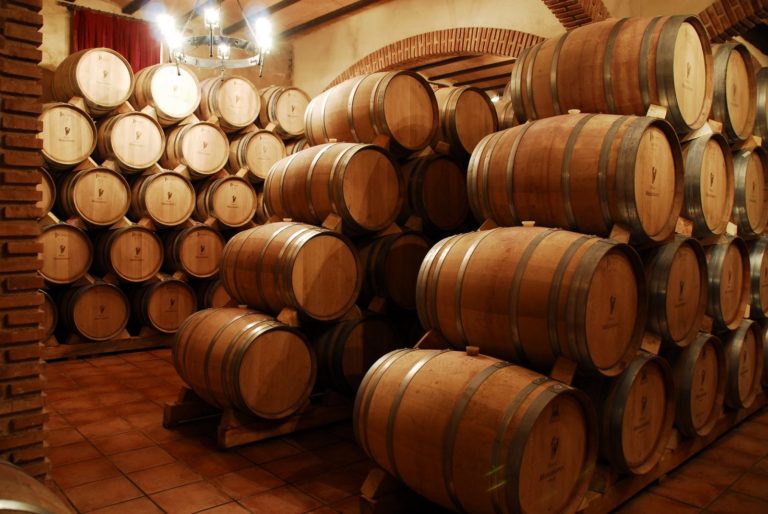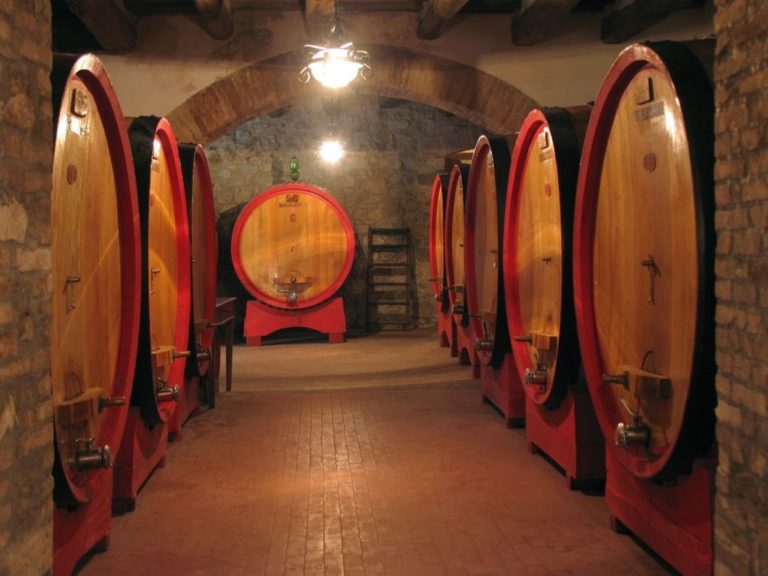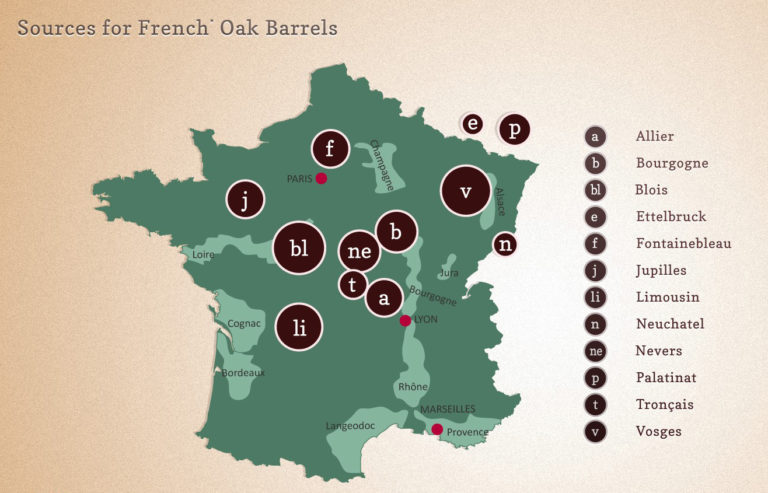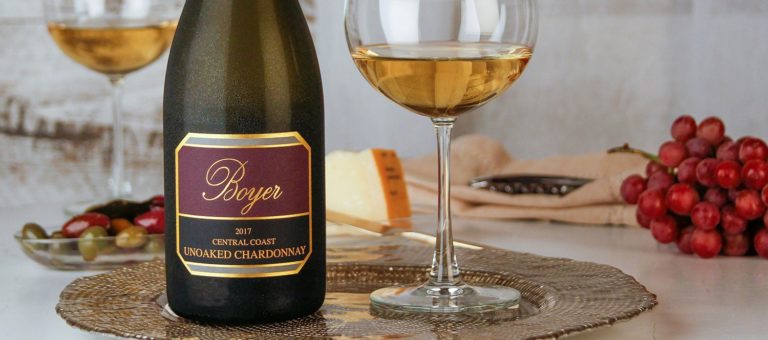
Back in 1973 a singing group, Tony Orlando and Dawn, made the act of tying a yellow ribbon around oak into an act of love and commitment. Americans have been in love with the flavor of oak in their wine since about that time.
Let’s examine how the flavor of oak comes to be a part of our favorite vintages.
Barrel Aging
In ancient times the Greeks, Etruscans and Romans all made and sold wine throughout the Mediterranean. Since there was no refrigeration or preservatives the grape juice was converted into wine rather quickly, resulting in wine that was sweet and high in alcohol. Most wine was stored and transported in a variety of large clay pots.
Widespread use of wood developed with the Romans. Winemakers learned that storing wine in oak improved the contents, making it softer and more complex. The sale of wine in wood barrels continued until the advent of glass bottles in the seventeenth century. A variety of woods and sizes were used for both transportation and storage.
Oak Barrels
By far the most popular wood to be used in the aging of wine is oak. Oak adds flavor, smoothness and creaminess. Compounds contained in the wood add flavors such as vanilla, almond, spices, dried fruit, caramel, toast, smoke and coconut – just to name a few. Oak allows the concentration of flavor and aroma compounds as well as tiny amounts of oxygen to act as a softening agent on tannin.
Oak also contributes to the color of the wine. White wines fermented in oak are generally pale in color and extra silky in texture, while whites fermented in stainless steel and matured in oak will be a darker, golden hue.

Types of Oak
There are several different types of oak used around the world. American oak is characterized by wider grains and lower wood tannin. It is found in Pennsylvania and other eastern states as well as Missouri, Minnesota and Wisconsin.
Italian winemakers are fond of using Slavonian (Croatian) oak (pictured above), which is characterized as having tight grain, low aromatics and medium tannin levels. Slavonian oak tends to be made into very large barrels (called barriques) reused for many more years before replacement. Large barrels tend to diminish the influence of oak on the wine due to the reduced ratio of wood surface to wine. To intensify oak influence winemakers will use smaller barrels.
By far, French Oak is the most heralded for use in wine barrels, considered far superior for its finer grain and richer contribution of aromatic components. French oak typically comes from one or more primary forests: Allier, Limousin, Nevers, Troncais and Vosges (see illustration below). French oak is in great demand and so it can be very expensive and difficult to obtain.
American oak tends to be more intensely flavored than French oak, sweeter with characteristics of vanilla. Big, bold reds are typically aged in American oak. French oak is known to produce silky tannin, creating a subtle sweetness and array of fruit flavors, spices and toasted almonds. It drives the “buttery, toasty” description of Chardonnay. But strongly oaked whites may provoke a description of a certain level of “pungency.”

Managing the Oak
Oak flavor extraction is reduced each time a barrel is used. For this reason, and to add complexity to the wine, winemakers manage the amount of time their vintages spend in new oak versus reused oak, and French Oak versus American Oak. A particular vintage may spend some months in new French Oak and then be shifted to reused barrels. It may then spend a certain amount of time in reused American Oak just to add to the fun.
Unfortunately, because oak barrels are expensive, perishable and hard to get, they can add as much as $2 – $4 to the price of a bottle of wine. That is why artificial oak flavoring has become so popular in the production of inexpensive (under $20), mass-produced wine. In lieu of genuine oak barrels winemakers substitute oak chips, oak staves, spirals, cubes, chains, bags or just good old liquid artificial flavoring. Ironically many of the big brand wines popular for their oak flavor have been produced using “fake oak.”

Rising Popularity of Unoaked Wine
Because of the frequent use of “fake oak” and the powerful effect oak can have on wine, many consumers have become disenchanted. They miss the natural fruit flavors that should be at the core of every wine. The result is that the industry has responded with a new category referred to as “unoaked.”
These wines are fermented and aged in stainless steel, more closely reflecting the rich, robust fruit core of the natural fruit. Indeed, many people who have previously disliked Chardonnay fall in love with “unoaked” versions describing them as bright and delicious… “not tasting at all like Chardonnay.”
Oak will continue to be an essential part of the wine making process. It adds complexity, structure, flavor and elegance – qualities much desired and appreciated. Understanding its role in the process adds to your wine sophistication and improves your purchasing prowess.
